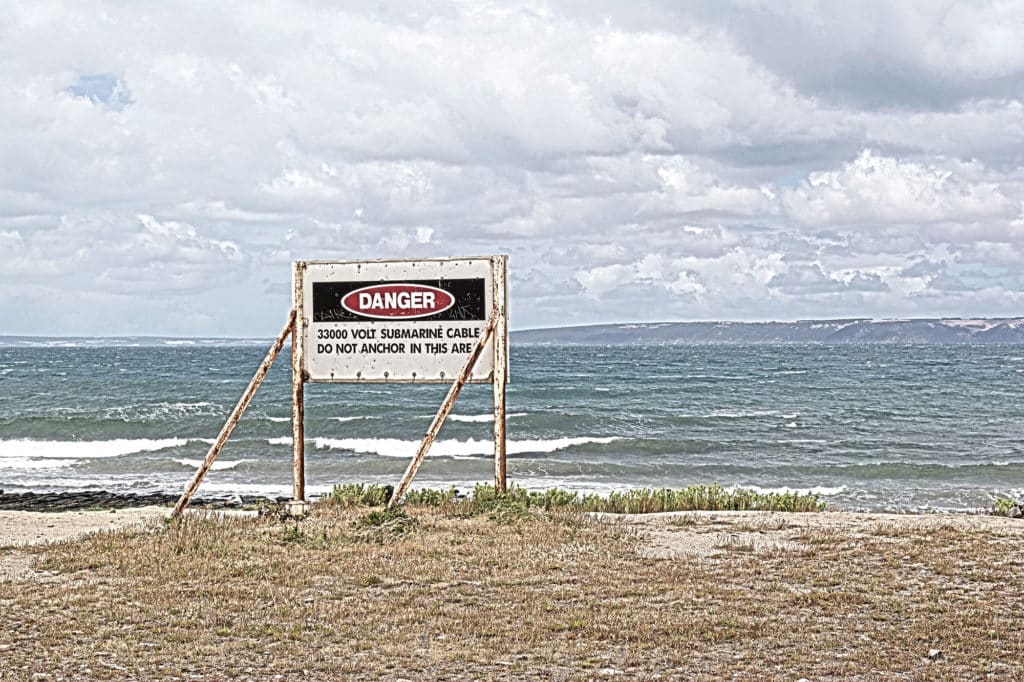
At 2:30 a.m. on Saturday, October 1, 2021, an alarm sounded in the control room of Platform Elly, one of six oil rigs off the coast of Huntington Beach, California.
An undersea oil pipeline had lost pressure, the result of a rupture that would eventually spill thousands of gallons of heavy crude into the ocean, according to the Coast Guard, threatening wildlife reserves, killing fish and birds, and fouling beaches.
The rupture, while still under investigation at the time of this writing, was almost certainly brought about by an anchor dragging from a huge commercial freighter, one of scores of ships stationed off the coast waiting to offload goods at the nation’s busiest port in Los Angeles and Long Beach Harbor. Federal transportation investigators discovered that the pipe had been pulled along the seafloor like a bowstring, dragged more than 100 feet from its original position and then split open.
Bad Neighborhoods
This ecological catastrophe points to an important lesson for recreational boaters. While our ground tackle is usually not big enough to damage an oil pipeline, it is still important to know precisely where an anchor will land, ensuring that it sets in a safe bottom and does not drag into a “bad neighborhood.”
A bad neighborhood involves anything that can foul ground tackle, such as cable crossings, pipelines, wrecks, rocky bottom or mooring lines. Once an anchor becomes ensnared in these places, most times there is little to do, save for cutting the anchor line and perhaps hiring a diver to retrieve the lost ground tackle at a later date.
You might free the anchor by pulling at different angles, but depending on the wind, current and size of boat, this can be fraught with peril. An infamous case in point is the February 2009 incident off the Gulf coast of Clearwater Pass, Florida. A crew of four professional and college football players tried to free a fouled anchor after a day of fishing by tying the rode to a stern cleat and powering forward. In the process, the vessel submerged and capsized, tossing the men overboard. Tragically, three died.
Like so many things in boating, the best remedy is usually prevention. Let’s look at ways you can avoid dropping or dragging your anchor into a bad neighborhood.
Read the Signs
Submerged cable crossings and pipelines in harbors and channels are often marked with signs on the shore, buoys, pilings or oil platforms warning boaters not to anchor in the area. Signs might also warn of ecologically sensitive areas, such as coral reefs or beds of turtle grass, where anchoring is forbidden. For your own safety and that of the marine environment, read these signs carefully and heed the warnings.
Look at a Chart
An up-to-date chart—either paper or electronic on a chart plotter—can tell you where bad neighborhoods are located, including pipelines (sometimes covered with rocks that also snag anchors), wrecks, undersea cables, artificial reefs, and even heavy kelp. When anchoring for the evening, try to set up completely clear of these areas. Even if you anchor well down-wind, shifting breezes and currents might drag you into a bad neighborhood.
A chart might also indicate designated anchorages in harbors and bays, areas that are safe for dropping the hook. If you don’t see a designated anchorage on the chart, check with the harbor master.
Read Next: Boat Anchoring Tips and Techniques
Use an Echo Sounder
Some foul-infested spots aren’t marked on charts, including small, isolated rocks and rubble fields, especially in areas far removed from heavy commercial marine traffic areas. This is where checking the bottom with an echo sounder can pay off. If you see indications of rocks, reefs or heavy kelp on the sounder display, look elsewhere for a safer area to set the anchor.
Set it Right
Having the right kind of ground tackle for your boat and setting it properly will help ensure that you don’t drag and foul the anchor in a bad neighborhood. This is a topic we have covered extensively in the past, and you can learn more online by visiting boatingmag.com/how-to/staying-power.









